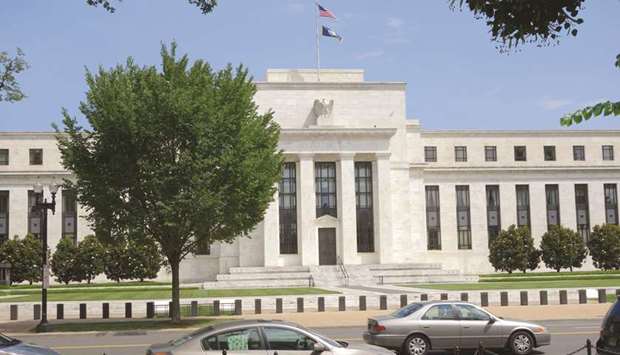If the Federal Reserve’s optimistic take on inflation had traders second-guessing their bets on an interest-rate cut this year, they’re taking matters back into their own hands now.
Those wagers have gained traction with the escalation in trade tension between the world’s two largest economies. The latest US tariff increase, and promised retaliation from China, are setbacks to the case for higher Treasury yields, and tame inflation data on Friday didn’t help. Rather than gamble on a swift resolution to the standoff, investors are more likely to seize on any signs of spillover – in economic data or markets – to drive yields lower.
Steeper equity-market declines could weigh on yields, as the Federal Reserve under chairman Jerome Powell has already proven its readiness to tilt dovish when market conditions are strained. Financial conditions have tightened since the start of the month, when Powell said the forces behind weak price pressures could be “transitory.” Nevertheless, bond traders have ratcheted back inflation expectations for two straight weeks.
“The market is probably underestimating how long this will take to resolve,” Charles Tan, co-chief investment officer of global fixed income at American Century Investment Management, said recently. “You’ve got to factor in a bit more of a bearish outlook for growth if you believe the trade war is likely to escalate.”
He expected the 10-year to remain at the low end of a 2.40%-2.70% range while the negotiations play out, but tumbling close to 2% “if things don’t work out and people feel the impact of higher tariffs.”
US President Donald Trump on Friday afternoon described the two days of talks as “candid and constructive,” but the tone shifted somewhat Saturday with Trump once again taking to Twitter to comment on the situation. The US leader said the Chinese may have felt they were “being beaten so badly” in the recent talks that it was better to drag their feet in hopes Trump would lose the 2020 election and they’d get a better deal from the Democrats. Trump warned they would get “far worse” terms if a deal was negotiated in his second term.
Yields on benchmark 2- and 10-year notes have dropped to 2.27% and 2.47%, respectively, – and that’s even before the market has had the chance to react to the very latest weekend rhetoric. They’ve more than reversed their increase following the May 1 Fed meeting, when Powell’s remarks on inflation fuelled what looked at the time like the beginnings of a more optimistic market shift toward expectations for stronger growth. Positioning for a rate cut was briefly pushed back to mid-2020, but markets now reflect stronger confidence in a move this year.
Against the backdrop of trade uncertainty, industrial production data from the US and China set for release this week may serve as an indicator of their respective economic bargaining power.
But Janelle Woodward, head of fixed income at BMO Global Asset Management, said last week that fixating on the US-China relationship may be missing the big picture on trade, and its implications for investors. The US administration may also be gearing up for a European confrontation, as the president is expected to make a decision on the findings of a probe into the national security risks of European auto imports by May 18.
The risk of a broader or more protracted trade battle could push the market back to the darker days of the fourth quarter last year, when trade tension helped drive the S&P 500 Index toward its weakest levels of 2018, she said.

The US Federal Reserve building in Washington, DC (file). Steeper equity-market declines could weigh on yields, as the Federal Reserve under chairman Jerome Powell has already proven its readiness to tilt dovish when market conditions are strained.
